Ukraine accused Russia of a “terrorist attack” after an explosion blew a large hole in a dam and hydroelectric plant on the Dnipro River, flooding several nearby towns and sparking a mass evacuation from what was already a war zone.
Ukrainian President Volodymyr Zelensky said the 30-metre-high Nova Kakhovka dam had been destroyed by an “internal detonation” early Tuesday, leading to the flooding of at least eight communities and threatening the city of Kherson. Russia claimed the dam collapsed after being hit by Ukrainian shelling, while some local officials suggested the 67-year-old structure had burst due to poor maintenance and record-high water levels.
Mr. Zelensky, who convened an immediate meeting of the country’s National Security and Defence Council, said 80 communities and thousands of people were immediately threatened by the rising water. “We do everything to save people. All services – military, government, presidential office, are involved,” he wrote on Telegram. “A set of international and security measures was agreed upon to hold Russia accountable for this terrorist attack.”
Prime Minister Justin Trudeau told reporters in Ottawa that the destruction of the dam “was another example of the horrific consequences of Russia’s illegal invasion of Ukraine” and would have “absolutely devastating for lives and livelihoods across the region.” Writing on Twitter, NATO Secretary-General Jens Stoltenberg made a more direct accusation, calling it “an outrageous act, which demonstrates once again the brutality of Russia’s war in Ukraine.”
Both Ukraine and Russia called for an emergency meeting of the United Nations Security Council to discuss the incident. Ukraine accused Russia of an “ecological and technological act of terrorism,” while Russia decried what it called an “act of sabotage carried out by Ukraine.” Both sides accused the other of carrying out the act to distract the world from the situation on the battlefield, where Ukraine is believed to be on the verge of launching a major counteroffensive aimed at liberating Russian-occupied areas of the country.
Intentional destruction of the dam would constitute a war crime under the Geneva Conventions, which ban attacks on dams because of the danger to civilians. Floodwaters – already reported at 11 metres high in some communities along the swelling banks of the Dnipro – are expected to peak Wednesday.
The disaster endangered communities on both sides of the river, which serves as the de facto frontline in southern Ukraine.
“It’s a calamity. You can’t rationalize it,” said Pavel Buznik, the head of a Red Cross emergency response team that evacuated 70 people with mobility issues from Kherson to nearby Mykolaiv on Tuesday. “We were going into homes where the water was already knee-high. I was driving down the street, and this dog was swimming, drowning beside me, and I couldn’t open the door to help it because of the water.”
Videos of the disaster site showed a torrent of water rushing through a large gap in the dam, completely submerging the 357-megawatt hydroelectric plant, which had 251 employees and provided power to much of southern Ukraine. Ukrainian officials had been warning since last fall that Russia planned to destroy the dam, unleashing the 18 million cubic metres of water stored in the Kakhovka Reservoir.
The Kakhovka Reservoir provided fresh water to huge swaths of agricultural land in the region. Wheat prices jumped 3 per cent on the news that as much as 20,000 hectares may not yield crops this year.
The reservoir also supplied cooling water to the Russian-occupied Zaporizhzhia Nuclear Power Plant, which was already considered at risk of a catastrophe due to continuing fighting in the area, according to the International Atomic Energy Agency. The IAEA said Tuesday that it was monitoring the situation but saw “no immediate nuclear safety risk at the plant.”
Russia’s official Tass news service reported that the town of Nova Kakhovka, on the Russian-occupied side of the river, was “under water” within hours of the disaster. The destruction of the dam also threatens the long-term water supply to the Crimean Peninsula, which Russia illegally seized and annexed from Ukraine in 2014.
Kremlin spokesman Dmitry Peskov accused Ukraine of “deliberate sabotage,” adding that “the Kyiv regime should bear all the responsibility for all the consequences.”
Open-source analysts said they saw no evidence of a rocket or artillery strike on the dam before it collapsed.
Last fall, as Russia withdrew its troops from Kherson after an eight-month occupation, its 205th Motorized Rifle Brigade issued instructions to city residents on how to act if the dam were “undermined” during the battle. “The city will be shelled if the Ukrainian army enters it, if the situation develops in an extreme way, the dam will be undermined,” reads the Oct. 21 post on the brigade’s Telegram channel. “I advise everyone who can evacuate to do so.”
On Tuesday, the Ukrainian government specifically named the 205th as responsible for the destruction of the dam.
Military analysts said it was possible that Russia saw a strategic advantage in destroying the dam as Ukrainian forces prepared to launch a long-anticipated counteroffensive. The Russian military said Monday that the counterattack had begun, though Ukraine’s military leadership remained silent about whether a new campaign had started.
“The Russians want to broaden the width of the Dnipro to make any possible crossing harder and also to maybe free some additional forces from this part of the frontline for elsewhere,” said Mykola Bielieskov, a Kyiv-based military analyst. “I think that there are military reasons for this – and I think it means that they are frightened.”
Ukraine’s Ministry of Defence warned that the rising water could carry landmines toward people’s homes. In the worst-case scenario, all of Kherson, which had a prewar population of 280,000, would have to be evacuated.
Mr. Buznik, the Red Cross rescue worker, estimated that about 60,000 people remained in the city, which has been under constant Russian shelling since its liberation in November.
Ukraine began running evacuation trains from Kherson to Mykolaiv on Tuesday, though only a few residents decided it was time to leave. Oleksandr Sosnovchik, a Ukrainian railway employee who was working on the evacuation train, said Kherson came under artillery fire as soon as they arrived in the city Tuesday afternoon. After the barrage ended, only 43 people took the offer to relocate to Mykolaiv. “There were young people, old people, people with small children, people with pets,” Mr. Sosnovchik said. “There was no panic, but people were depressed at having to take their things and leave their homes.”
Dementiy Beliy, a writer who lives in Kherson, said most of the city was watching and waiting to see how high the water would rise. “It is clear that for those who live in private houses, there is no way but to leave. But those in apartment buildings hope to wait on upper floors,” he said in an exchange of messages. “The situation will worsen at night … the unknown awaits us all. As long as there is opportunity to hold on in Kherson, I will stay. This is my homeland. But we’ll see.”
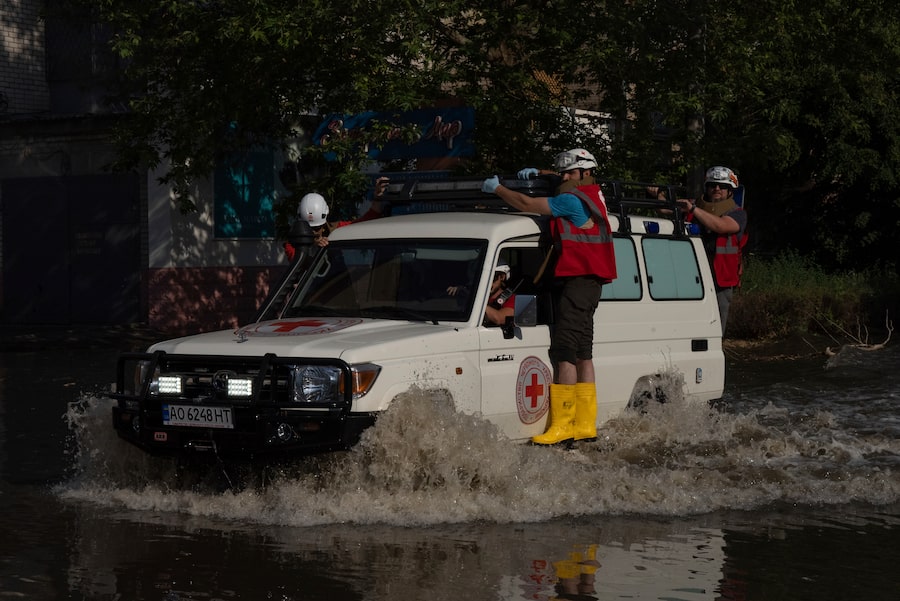
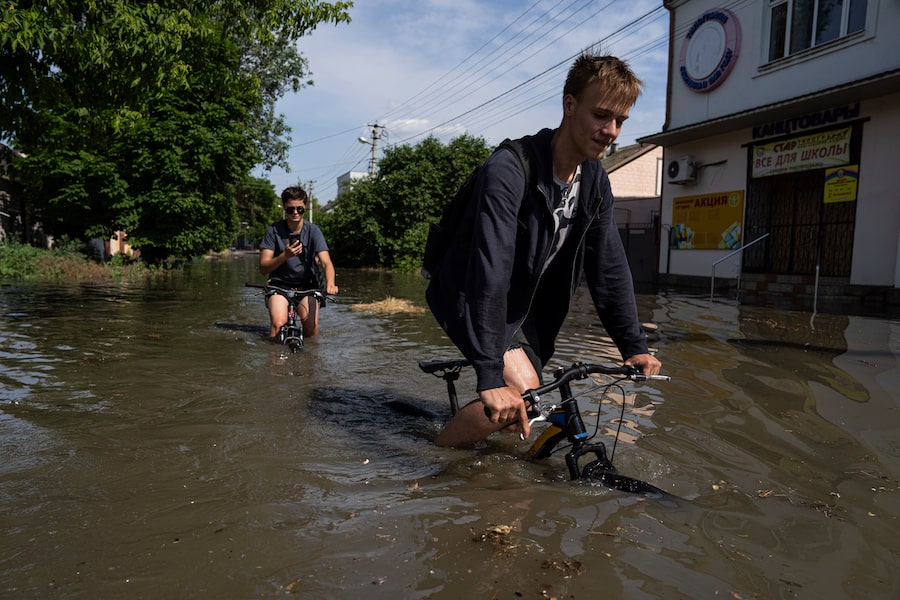
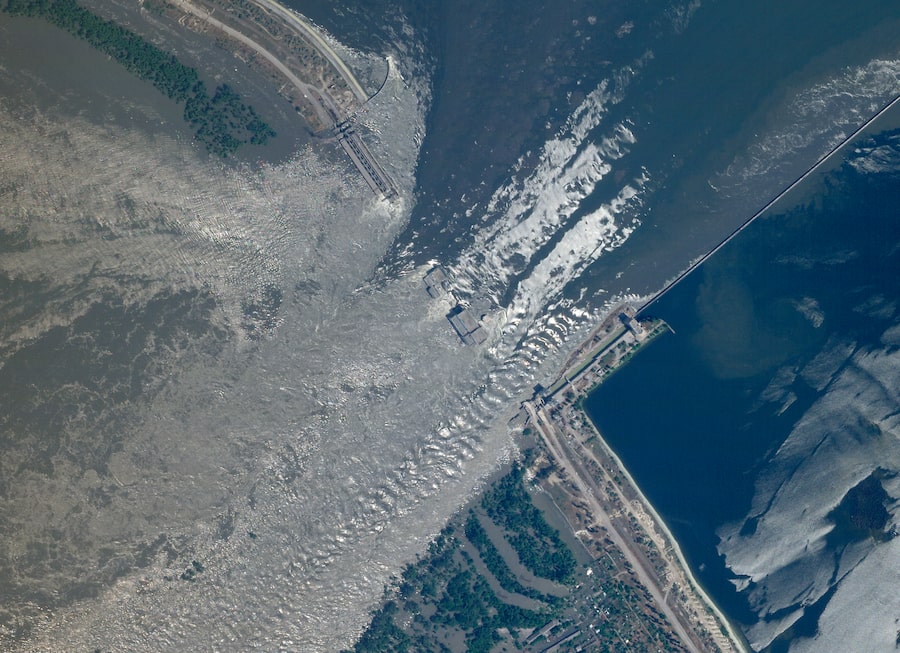
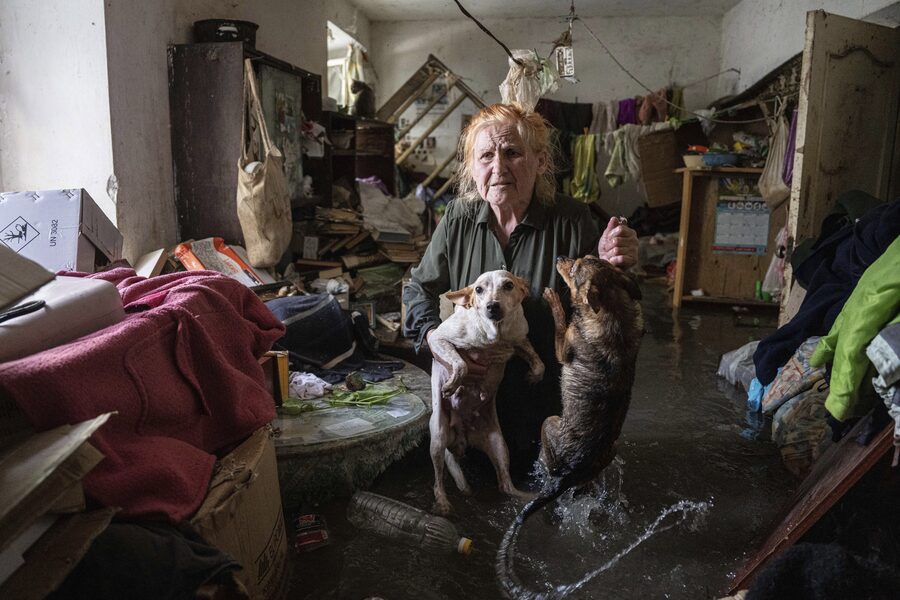
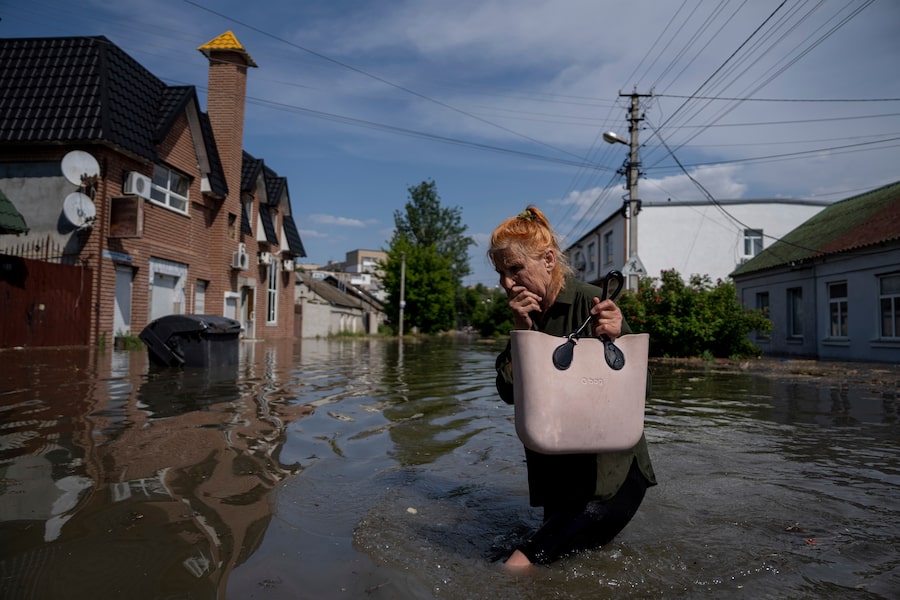
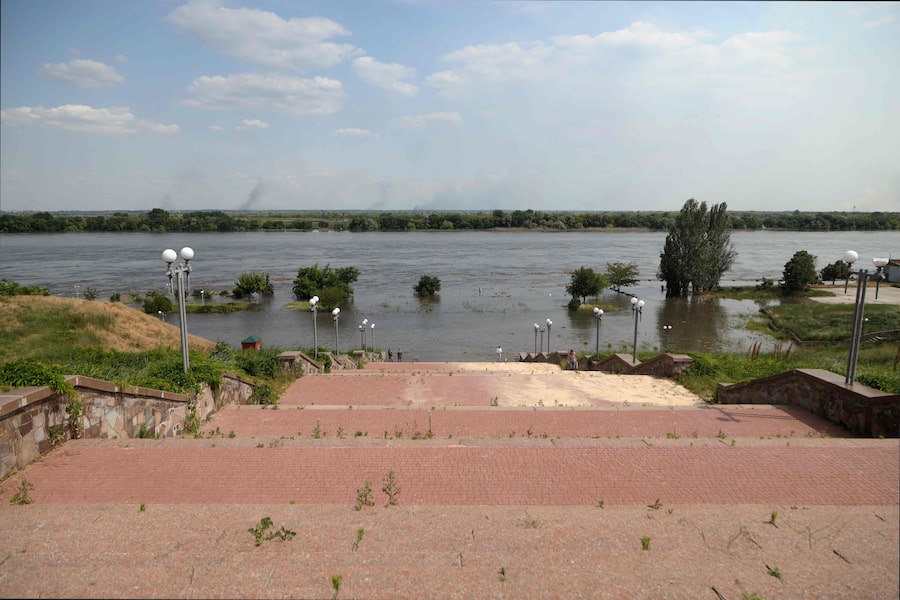
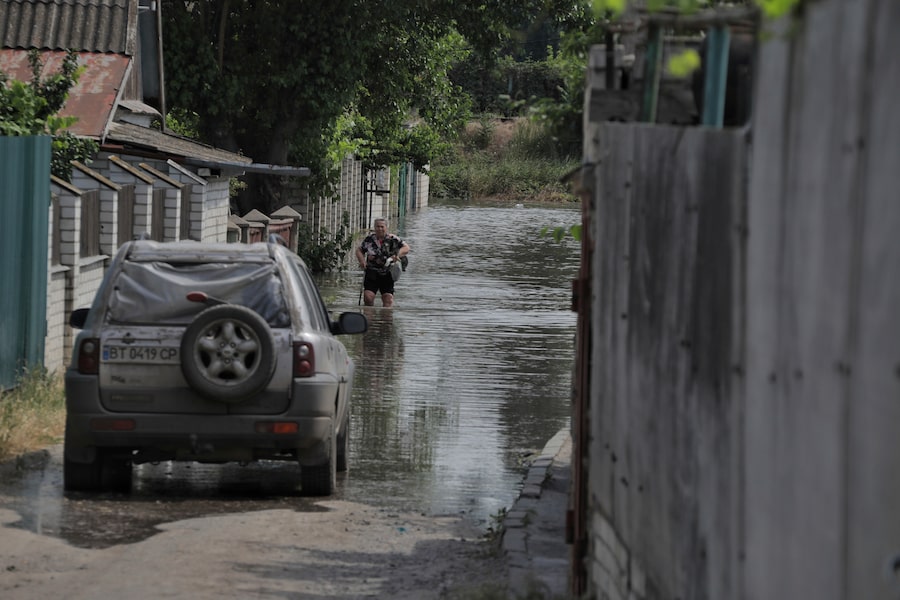
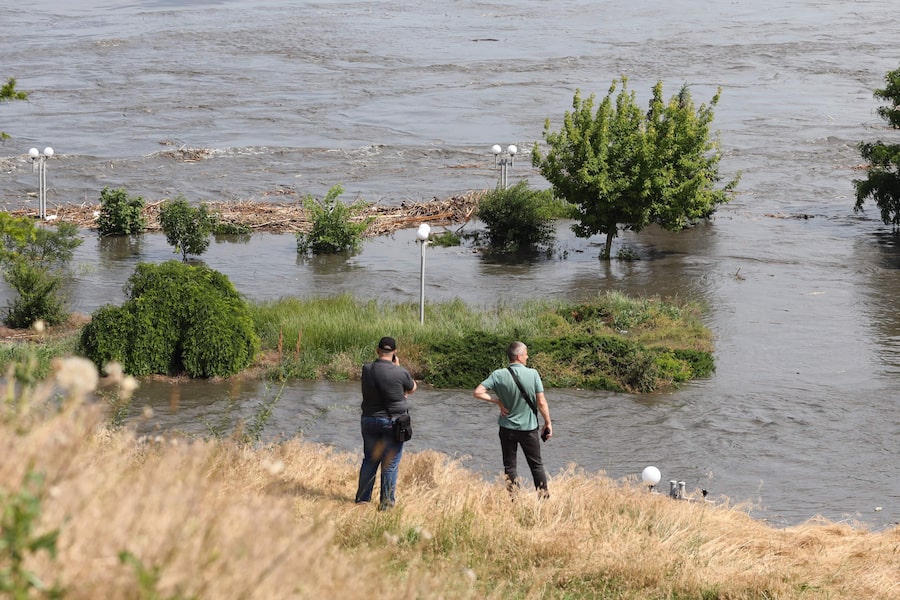
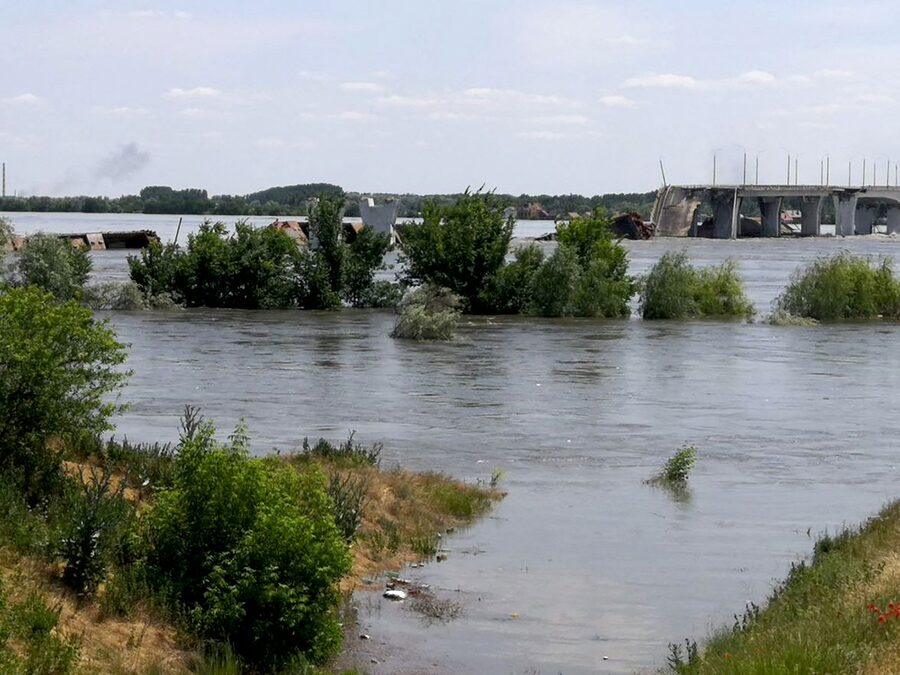
 Mark MacKinnon
Mark MacKinnon